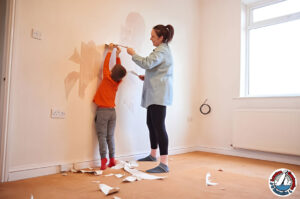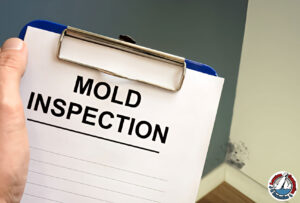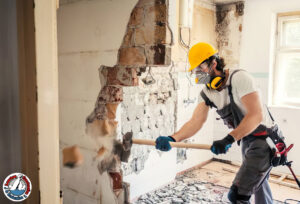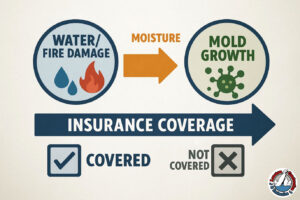How to Rebuild a Home After a Water Flood | Follow These Key Steps
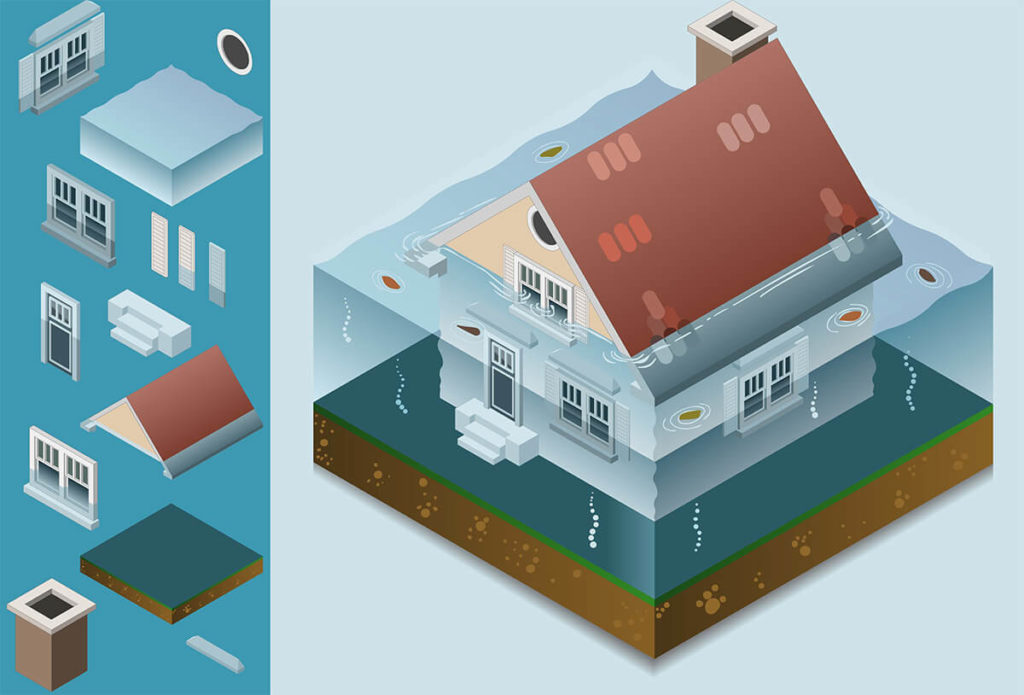
The steps you take after water floods your home will determine how well the property can be restored. Let’s look at some key points in this article.
A flood is one of the most traumatic events that can happen to a home. While it is often possible to restore the condition of a home after a flood has occurred, doing so will not be easy. There is plenty of hard work ahead, and some tough decisions to make, as well.
With this article, we’d like to point you in the right direction for your post-flood restoration project. While it’s admirable for you to take on much of this work yourself, there are parts of the restoration process that may be better handled by the pros. If you find that you need help with some or all of this important job, please reach out to Lawton Construction & Restoration, Inc. Our team has the experience and equipment necessary to properly restore a home after a devastating flood event.
Wait Out the Water
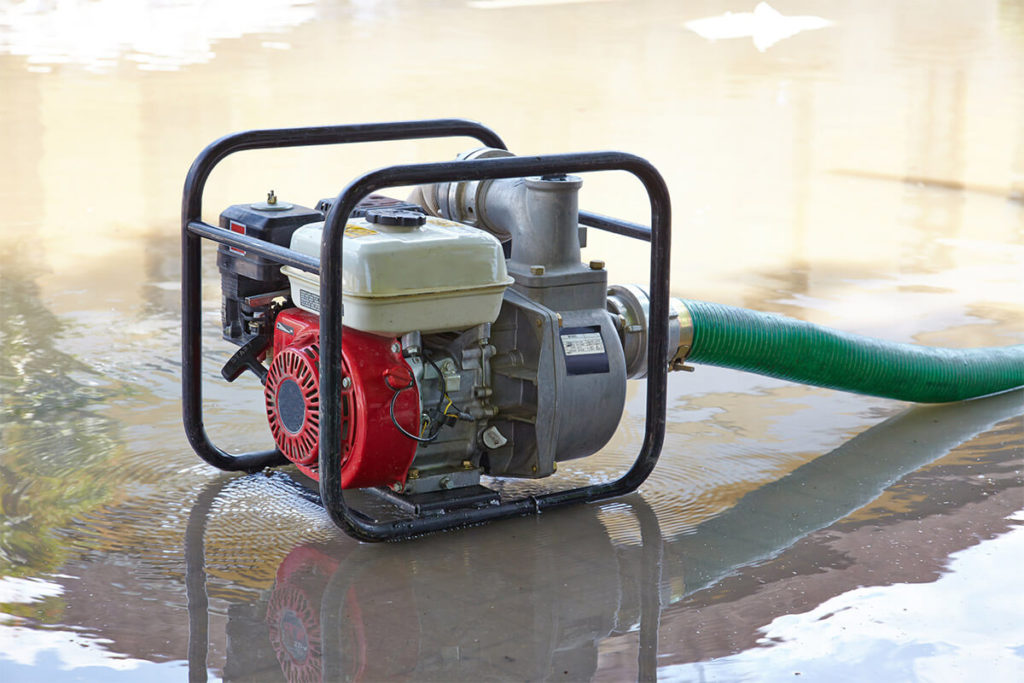
Unfortunately, our first piece of advice isn’t an active step at all – you’ll simply need to wait out the water before the restoration process can begin. Many homeowners are surprised to find just how long it can take for the water to disappear, even after it seems like the flood is over. Despite your mounting frustration, the best thing you can do at this point is to be patient and wait it out. Of course, while you are waiting to get started with the physical work, you can do some prep work like create a restoration plan, acquire equipment and supplies, and more.
Initial Restoration Steps
At this point, we are going to assume you have waited long enough for the waters to recede from your home. Once that has occurred, you’ll be able to get started working through the early steps of examining the damage and determining a realistic course of action to move forward. With that in mind, here are three early steps to think about when you first return home.
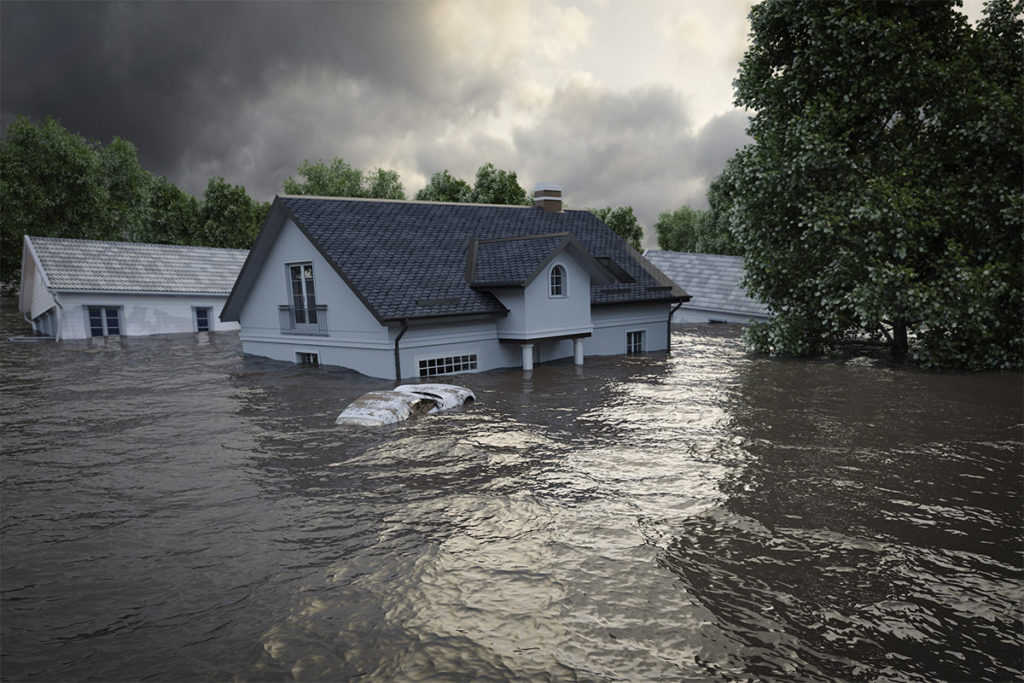
- All utilities off. It can’t be stressed enough that safety should be your top priority in this process. Don’t do anything that puts yourself or someone else at risk. Yes, you want to save as much as possible in your home, but it’s not worth it to do so at the expense of personal safety. Confirm that all utilities have been turned off to the home before you enter and start cleanup work. That means things like electricity, water, and gas need to all be shut off. If you aren’t sure how to do so, contact your local utility company for assistance and direction.
- Wear the right protective gear. Again, this is another point about safety. Floods don’t seem as dirty to homeowners as fires, since floods consist of water, and we typically think of water as being clean. However, once that water moves through your home, it can pull all kinds of dirt, debris, and contaminants out along with it. So, the inside of a home after a flood is anything but clean. Before going in to do work, put on a pair of rubber boots, wear gloves, and employ the use of a respirator.
- Pump out the basement. Once flooded, it’s possible that a basement space simply won’t dry out until you pump the water out. Of course, using a powered pump means using electricity, so this is a step that needs to be taken with extreme caution and you must use the right kind of pump. If you don’t have access to a pump that has been designed for this kind of work, contact Lawton today to work with our team on this task.
If it is not clear enough, we’ll say it one more time for effect – the key here is safety. With the floodwaters gone, it’s easy to feel like you are safe, but that’s not necessarily the case. Take all necessary precautions to protect your health and to avoid making a bad situation worse.
What Can Be Saved?
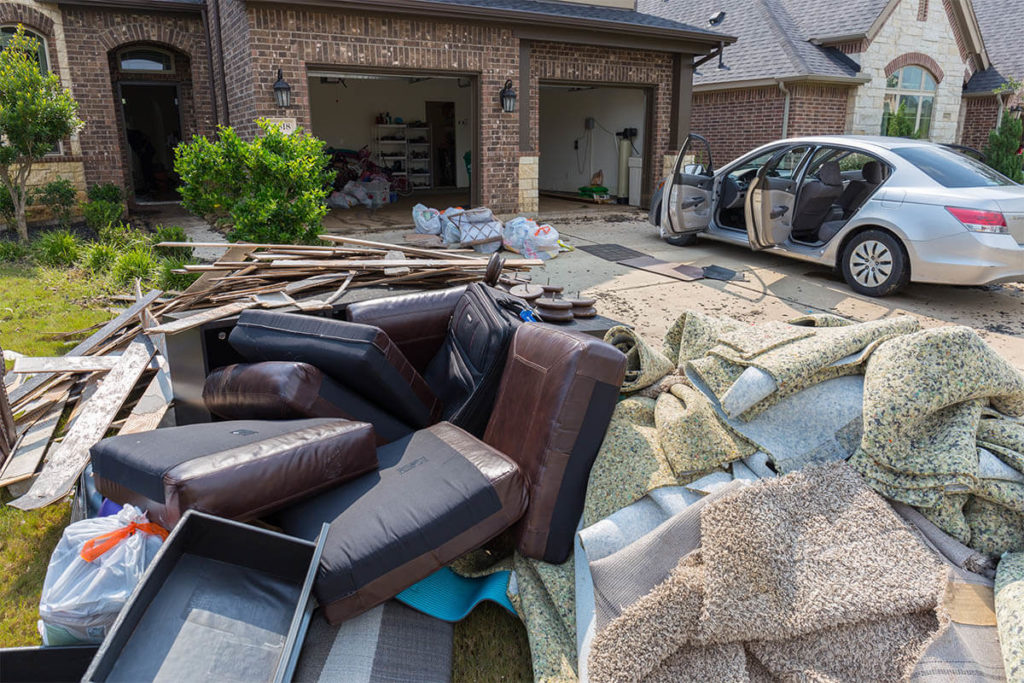
Perhaps the biggest question you will need to deal with after securing the property and taking personal safety measures is what you can save and what will need to be thrown away. It’s natural to want to save everything after a flood, whether for sentimental or financial reasons. That’s just not possible, however, so understanding what kinds of things will probably need to go is a good step toward restoration.
As a starting point, all floor coverings will almost certainly need to be removed and disposed of properly. This applies to carpeting, of course, but also to materials like laminate and linoleum. You will have a better chance of saving hardwood floors, although that will depend on the amount of time those floors spent under the water. Tile floors have the best chance of surviving a flood, so examine their condition in the aftermath to determine your next move.
Another component of your home that will likely need to be removed is any drywall that came into contact with the water. As the name would suggest, most drywall products are not meant to get wet, and they will be ruined if they do. So, walls on floors of the home that were flooded will almost certainly need to be stripped down to the studs and rebuilt from there.
Foundation Examination
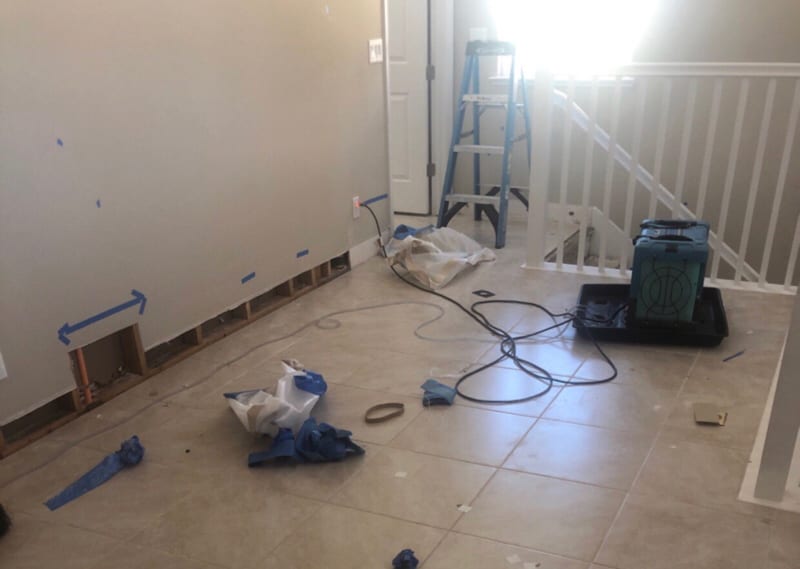
This is a point that will likely require the help of an expert. If you have wooden logs supporting your home, those need to be carefully inspected to evaluate their condition. Doing this inspection on your own without the right training or experience is not recommended. With something as important as the foundation, it’s best to get professional help.
Furniture May Survive, But It May Not
You are likely to find hit-and-miss results when it comes to saving the furniture in your home. It all depends on where each piece of furniture lives in your house and how long the water was in that area. For example, a couch with wooden feet that was only faced with a couple of inches of water may come out just fine, as the upholstered part of the piece would have been high and dry. On the other hand, something soft like a reclining chair that had water rise up to the level of the seat and beyond probably can’t be saved.
Saving furniture is yet another area where we see the importance of professional assistance during restoration. An experienced team like that at Lawton will be able to determine which pieces can be saved and which should be thrown away. Don’t toss something out without first getting a professional opinion to make sure no remediation techniques could save it.
Check the Windows
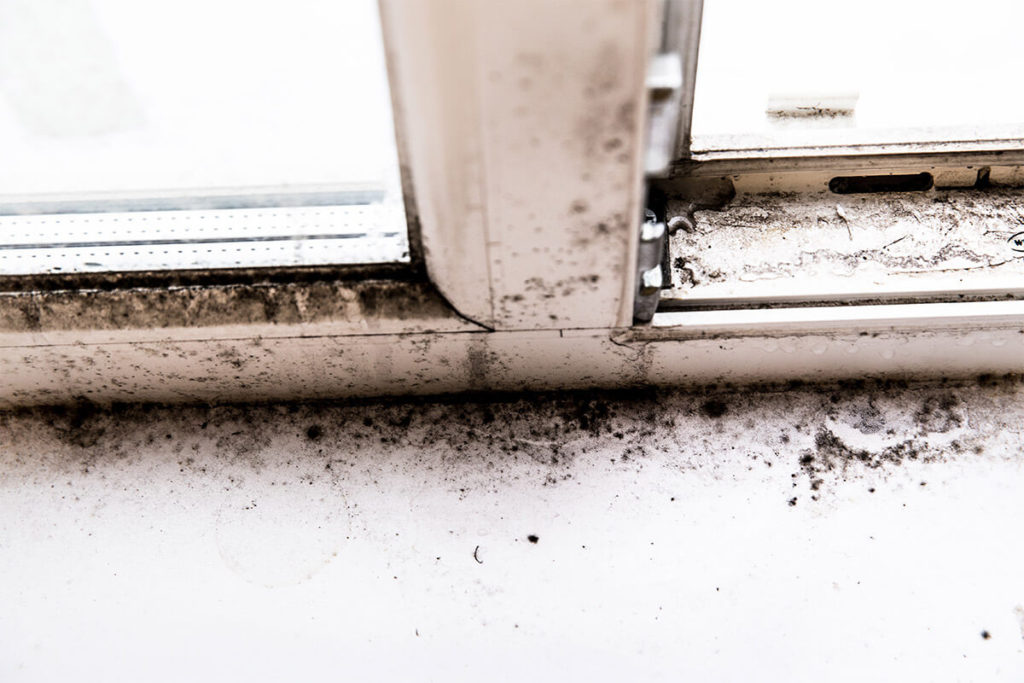
The glass portion of a window isn’t likely to be affected by water, but the frame certainly can be. If your windows have wood frames, they may not survive the flood. Windows with plastic frames have better odds but inspect everything anyway and see if any gaps have opened up around the window casing.
Thorough Cleaning is Required
As we mentioned above, floods are surprisingly dirty. With that in mind, much of your restoration effort should be focused on properly cleaning everything that did survive the flood. Use quality cleaning products that feature antibacterial agents and go over surfaces and items more than once.
Ongoing Ventilation
Great air movement through the home is going to be one of your strongest allies in the restoration process. In addition to opening doors and windows for ventilation, also consider using fans and even dehumidifiers to take moisture out of the space. Allowing moisture to linger for a long time can lead to mold and mildew problems, which will create unsafe conditions and lead you to throw away even more items.
Contact Us Immediately
While some patience is required in the flood restoration process, it’s also important to put together an action plan as soon as possible. If your home has recently been flooded, or if you have started to do restoration work and now realize you need help, ask the professionals at Lawton for help. Our friendly team will work with you to determine the right course of action for your circumstances.
Also, if your area is prone to flash flooding, it would be wise to check out our article on staying safe during a flash flood. As the name would suggest, you won’t have much time to react if a flash flood occurs, so planning is essential. Thank you for your time and feel free to contact us right away with any questions or to schedule service.
Who We Are
Lawton Construction & Restoration. Proudly serving in North California & Nevada since 1976.
Turnkey services: Emergency, Restoration, Content Care
All levels of complexity: Residential, Comercial, Industrial
Fast interaction with all insurance companies.
